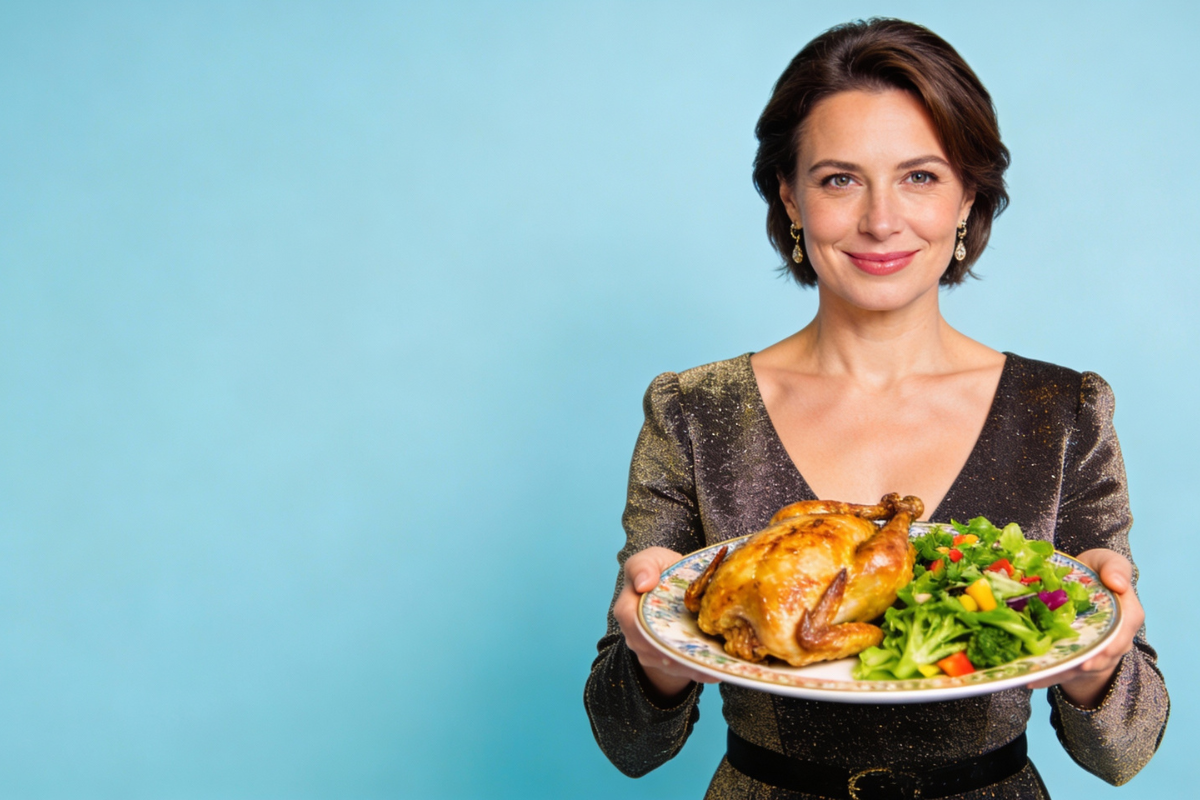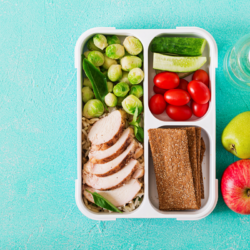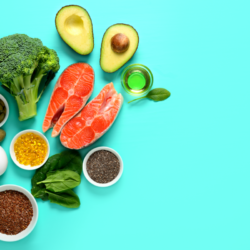Why is it important to plan ahead for a balanced festive meal?
Anticipating your meal allows you to avoid overeating and overdigesting. This optimises the metabolism and limits fat storage.
During the festive season, our bodies are confronted with unusual meals, often rich and late. Yet insulin sensitivity naturally drops in the evening, exacerbating the post-meal glycaemic peak.
By planning ahead, you can structure your food intake, stick to your eating patterns and limit impulsive snacking.
Which starters should you choose to get a festive meal off to a good start?
Choose starters rich in fibre and antioxidants. They aid digestion and limit the rise in blood sugar levels.
Raw vegetables, homemade soups and mixed salads slow down the absorption of sugar by forming a protective “fibrous net” in the intestine.
This is the strategy of food sequencing: vegetables first, then proteins, then starchy foods to cushion the insulin peak.
How do you put together a balanced main course for a meal?
Opt for lean proteins combined with gentle cooking methods. This limits fat intake while maintaining satiety.
Turkey, salmon or pulses trigger the release of satiety peptides (PYY, GLP-1, CCK) and slow down ghrelin, the hunger hormone.
Stuffings can be revisited with herbs, dried fruit and vegetables, for a meal that’s both festive and digestible.
What accompaniments should you choose to make your meal lighter?
Choose roasted vegetables, complex starches and digestive herbs. These foods promote glycaemic balance.
Sweet potatoes, wild rice, carrots with cumin or Brussels sprouts with thyme enrich the meal with micronutrients and prevent post-dinner cravings.
What desserts should you choose to round off a light meal?
A dessert can be both delicious and metabolically correct. Choose cooked fruit or light textures.
Poached pears, compotes with no added sugar or chocolate mousse with avocado are good alternatives to overly sweet logs.
These choices avoid the double effect of a glycaemic peak and liver overload at the end of the meal.
How do you manage portions during a festive meal?
Use small plates and wait 20 to 40 minutes before refilling. This time corresponds to the hormonal activation of satiety.
Satiety signals take time to reach the brain. Eating too quickly leads you to consume far more than you need.
Adopt the “½ vegetable – ¼ protein – ¼ starch” method to balance your meal visually and metabolically.
What post-meal gestures improve digestion and blood sugar levels?
A simple 10-15 minute walk immediately after a meal significantly reduces the postprandial blood sugar peak.
The activated muscles absorb glucose without the need for extra insulin. This takes the strain off the pancreas and improves sugar tolerance.
This reflex is far more effective than taking a walk on an empty stomach or taking ‘miracle’ post-excess herbs.
Does sleep influence our eating behaviour?
Yes, directly. Less than 7 hours’ sleep throws the appetite hormones out of balance.
Leptin (satiety) decreases, ghrelin (hunger) increases. The next day, the first meal will be richer and unbalanced.
A good night’s sleep is just as powerful a slimming tool as a well thought-out menu.
Why is drinking water between meals so important?
Water stimulates thermogenesis and helps regulate hunger. It also speeds up post-meal elimination.
Drinking 500 ml of water can increase your metabolism by 30% over the following hour. What’s more, thirst is often confused with hunger.
How does stress affect our meals during the festive season?
Cortisol, which is released during periods of stress, increases our appetite for sweet and fatty foods. It also encourages abdominal storage.
Practising cardiac coherence or belly breathing before a meal reduces emotional appetite and improves digestion.
Comparative table: good reflexes for a balanced meal
| Behaviour | Impact on health |
|---|---|
| Start with fibre (raw vegetables/soup) | Slows the absorption of sugars |
| Include lean proteins | Promotes satiety and stabilises blood sugar levels |
| Wait 20 minutes before having a refill | Allow time for satiety signals to act |
| Take a walk just after your meal | Reduces postprandial blood sugar peaks |
| Get plenty of sleep (7-8 hours) | Balances hunger hormones |
FAQ: frequently asked questions about balanced festive meals
- Can a balanced meal still be festive?
- Yes, by choosing quality foods, healthy cooking methods and well-constructed plates.
- Should I leave out dessert if I want a balanced meal?
- No, but it’s better to opt for cooked fruit or low-fat desserts to avoid excess.
- Should starchy foods be avoided at Christmas?
- No, but placing them at the end of the meal, after vegetables and proteins, limits their glycaemic impact.
- Is a digestive walk really effective?
- Yes, it improves blood sugar levels and soothes the digestive system in the first few minutes after a meal.
Sources





